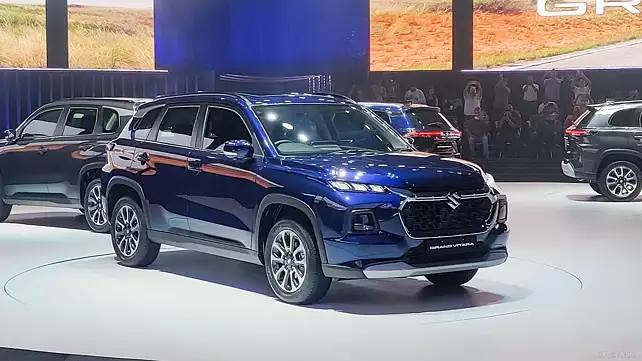2022 Maruti Suzuki Grand Vitara: The making of the bigger Brezza

Situated around 60km from Delhi is an integral part of the Indian automotive story. It’s the birthplace of a few best-selling cars in the country. It’s where cars jump out of computer screens and clay modelling studios into the real world. A world that has 33 test tracks and around 250 testing and validation labs. And it’s here that Maruti has shaped and honed its most important model in over a decade, the new Grand Vitara.
Welcome to Maruti Suzuki’s research and development centre in Rohtak, Haryana. This 600-acre facility was built with an investment of 3,800 crore to test and validate everything from new components to powertrains to new technology and, of course, deliver cars with good crash-worthiness. It’s also a place so secretive that one has to give up their belongings like cellphones and bags and what have you and seek permission to use the john. A typical R&D facility, then…
Maruti Suzuki Grand Vitara Left Front Three Quarter
Consumer focus
In some ways, yes. But the fact that it shares co-development responsibilities with Suzuki’s R and D centre and proving ground in Japan, and is built to the same spec and adherence limit as the latter, does give it great cachet. Now, the Rohtak facility might develop global models, but its focus continues to be on serving the Indian customer needs best. And it is in this context that we were invited to check out some of Rohtak’s 250 R&D labs since the new Grand Vitara owes its customer-centricity to them.
This centre has additional responsibilities too. It is supposed to be the incubator for future technologies and a trend reader for what will happen. On that count, Rohtak is already working and readying itself for the introduction of ADAS, 5G connectivity-related tech, and democratising aspirational features, which are currently the dominion of luxury cars. Furthermore, the facility is also working on getting Maruti – and Suzuki with it – further ready in terms of powertrain solutions.
It is working on updating its IC engines to meet upcoming emission norms as a short-term solution. It’s also working on developing new engines to run on alternate fuels like ethanol-heavy E85 and E100, as well as Bio-CNG. This is Maruti’s medium-term solution to the expected change in government norms for passenger vehicles. And finally, for the long term, it is developing hybrids and EVs that are affordable, practical, and aspirational.
Tags: Maruti Suzuki